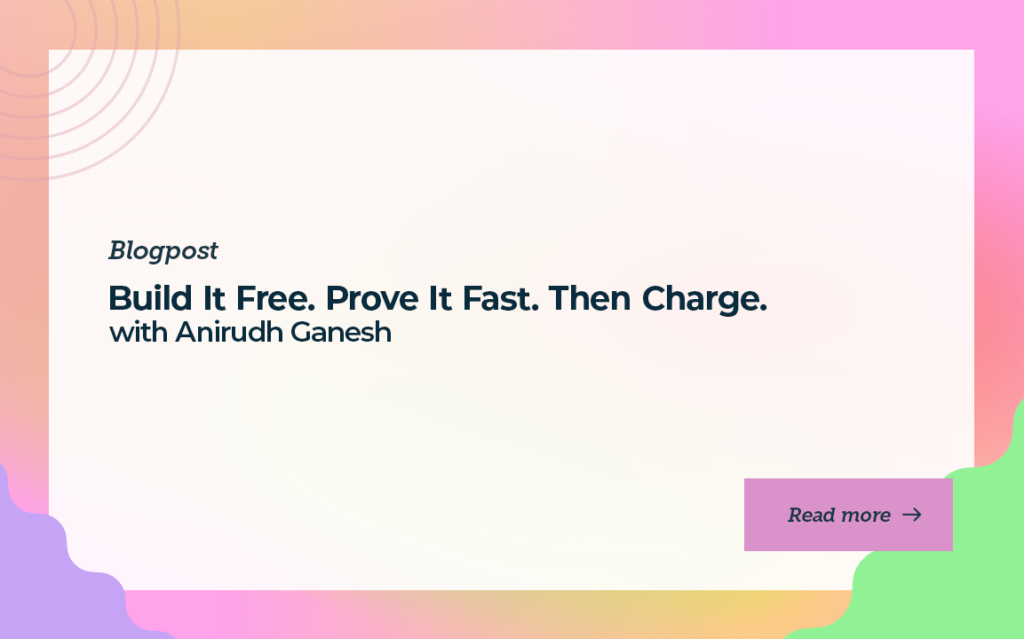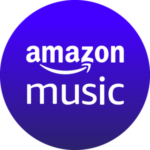Build It Free. Prove It Fast. Then Charge with Anirudh Ganesh

The best startup ideas don’t start with brainstorming. They start with frustration. Anirudh Ganesh didn’t invent a new market. He spotted an obvious, painful inefficiency: boutique hotels had outdated, unusable websites, losing up to 30% of revenue to online travel agencies (OTAs).
Startup ideas don’t need to be revolutionary. They need to fix something visibly broken, where the cost of doing nothing is already high.
Build Value First, Validate Second
The first step was walking into hotels and offering to rebuild their websites for free. Prototypes beat PowerPoints. Founders waste months crafting narratives when two weeks of scrappy execution can prove if real value exists.
If you can create value quickly, even without a polished product, that’s the only validation that matters.
Look for Pull, Not Push
Early product-market fit is measured by how quickly customers start engaging with your product. When hotel owners, previously unresponsive, started calling back asking for more, it was a clear signal: value had been created.
You don’t find product-market fit by pushing harder. You find it when customers start pulling you in without needing to be chased.
Referrals Are Early Proof of Real Demand
Closing one customer matters. Getting referred to others matters more.
Early referrals, especially unsolicited ones, show two things:
- You’re solving a problem painful enough that customers want their peers to solve it too.
- Your solution is strong enough to recommend, given their reputation.
In industries like hospitality, referrals open new regions faster than any marketing spend.
Cold Calling Works When the Math Is Simple
The initial outbound pitch wasn’t clever. It was brutally simple: “Would you like to book at an 8% commission instead of 25%?”
In saturated markets, clarity beats creativity. If you can make the value obvious in one line, you don’t need fancy campaigns. You need a phone and a list.
Customer Engagement, Not Just Usage
Customers who complain and ask for more are more valuable than silent users. (Customer feedback for Product Success)
When hotel owners began requesting features, such as different pricing for weekdays versus weekends, it signaled a deep level of engagement. They were investing time and feedback because they believed the product could become essential.
Engaged customers want your product to become better because switching isn’t appealing.
How Constraints Built a Better Business Model
When early sales depend on cold calling, speed and cost discipline decide survival. Anirudh Ganesh and his co-founder achieved their first thousand customers almost entirely through cold outreach, utilizing low-cost tactics such as unpaid internships and creative negotiation.
Because they couldn’t afford expensive, in-person sales visits, they flipped the disadvantage into a competitive edge. Instead of forcing hotels to make upfront payments, they introduced a “pay-per-use” model, with no large fees and minimal risk. This structure not only removed friction but also generated more revenue over time than a fixed SaaS model would have.
In bootstrapped companies, constraints often lead to commercial innovations that funded startups overlook. Listening closely to customer concerns about trust, cost, and commitment can expose where your pricing model needs to evolve.
Self-Serve Is Customer Psychology
By the time Hotelzify reached 100 customers, they had shifted the onboarding model. Hotels could self-serve through an app, creating their own websites with minimal intervention. This was about embedding effort.
Users who invest time setting up a product are more likely to stay. Sunk cost bias isn’t a bug. It’s a feature founders can design for. Making customers feel a sense of ownership over the setup process leads to higher activation rates, better retention, and less price sensitivity later.
The lesson: seamless self-serve onboarding is about increasing the customer’s investment in the relationship.
Cold Calling at Scale Requires FOMO, Not Just Features
Reaching hotel owners through receptionists became a bottleneck until the pitch evolved. Instead of selling features, the team created a sense of FOMO.
Telling a hotel receptionist that a competitor nearby was already seeing success shifted the urgency. Suddenly, connecting the call was no longer optional. It was a way for lower-level staff to protect themselves politically inside the organization.
If your frontline audience lacks authority, your messaging must provide them with a reason to elevate your message. Fear of missing out on a competitive edge proved more powerful than listing technical benefits.
Predictability Comes in Layers
Customer acquisition became predictable in two layers:
- Independent hotels could be acquired through structured cold calling, with relatively clear conversion rates and scaling math: more callers result in more customers.
- Hotel groups and chains remained unpredictable, with longer, strategic sales cycles tied to executive relationships, brand politics, and market timing.
- Founders often expect full predictability too early. In reality, predictability builds first at the simpler, lower-ticket levels, while enterprise motion requires a separate, slower, relationship-driven engine.
Understanding where you can predict and where you can’t yet is critical to planning resources and setting expectations.
Focus on Revenue Impact Early
Early customer feedback is useful, but revenue impact tells the real story. Tracking how much total business a product drives for customers is a clearer measure of value than adoption or usage alone.
When customers can attribute a double-digit percentage of their revenue to your platform, it’s time to stop thinking about feature delivery and start thinking like a revenue partner. Product decisions should prioritize driving a larger share of customer results, rather than simply expanding the feature list.
Tie Product Expansion to Operational Bottlenecks
Launching AI capabilities only makes sense when tied directly to real operational pain. Labor shortages in hospitality created a measurable opportunity: lost calls, missed bookings, and wasted demand.
Instead of building AI for the sake of it, focus development where human gaps cost real money. Target problems where automation drives revenue, like handling 24/7 booking calls, managing guest inquiries, or driving upsell opportunities, not where it simply saves support tickets.
Products that close revenue gaps tend to land faster than those that simply promise cost savings. (From Messy Beginnings to Product-Market Fit)
New Markets Follow Existing Demand, Not Vision Maps
Market expansion works best when it follows customer pull, not founder ambition. Organic inbound from multiple continents signaled where Hotelzify could expand effectively without needing to brute-force entry.
Founders scaling internationally should look for proof signals first, such as inbound trials, a natural product fit, or word-of-mouth spread across borders. Start where you’re already being pulled, then invest in deepening your presence, not in manufacturing it.
Conclusion
Finding product-market fit isn’t about guessing right. It’s about solving a visible, urgent problem better than anyone else, and proving it fast.
The clearest signals aren’t usage metrics or feature launches. They’re pulled from customers, revenue impact, referrals, and expansion that follows real demand. Success compounds when founders build around reality: real operational gaps, real customer behavior, real business math.
If you want to scale faster, stop pitching ideas and start delivering outcomes. Build where pain is already obvious, create value before asking for commitment, and follow the pull, not the plan.
Product-market fit is earned, not invented.
Want to drive more bookings without relying on OTAs? Hotelzify helps hotels turn their websites and guest communications into real revenue channels.
Subscribe to the Predictable Revenue Podcast for weekly conversations with founders building real companies. And join our email newsletter to get the best insights straight to your inbox.
NO TIME TO READ?


